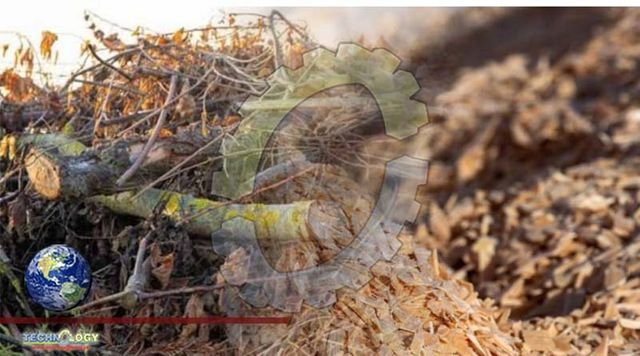Although petroleum remains the primary source for producing commodity chemicals and fuels, most chemical companies face challenging problems due to volatile energy markets. Alternative and more sustainable renewable resources are urgently needed. The dry matter that makes up plants lignocellulose is one option. It represents the most abundant supply of organic matter worldwide, and as it is the essential feedstock for the valuable pulp and paper industry, there is already an industrial supply on hand.

Despite the abundance of lignocellulose, making full use of its components is not a trivial matter. Lignocellulosic biomass consists mainly of cellulose, hemicellulose and lignin, but the traditional pulping process only upgrades the cellulose. About 98% of lignin is burned directly in the mills themselves in an energy recovery phase. The nature of this lignin depends on the pulping process employed.
The native lignin extracted from milled wood consists of a complex polymer featuring many propylphenol subunits. If broken down into monophenolic compounds, lignin could produce valuable products such as aromatics, phenolics and biofuels. However, the methods used to release lignin before pulping change its structure, forming stable C–C and C–O bonds between the propylphenol groups with remarkably high dissociation energies (up to 494kJ/mol for C–C bonds) that require harsh reaction conditions to break. As a result, the leftover lignin fraction generally ends up as fuel or waste.
A strategy called the lignin-first method or reductive catalytic fractionation has been significantly improved in recent years to achieve lignocellulose fractionation under milder conditions and obtain fewer and more renewable resources uniform products from lignin. This protocol produces a depolymerised lignin oil enriched in phenolic monomers and oligomers suitable for upgrading. However, most current lignin-first methods require transition-metal catalysts; thus, environmentally benign and sustainable alternative methods are desirable. They also leave behind most lignin oil as an inseparable and irregular mixture of dimers and higher oligomers composed mainly of C–C bonds, complicating its use.
In 2019, Yanqin Wang from the East China University of Science and Technology led a research team that developed a one-pot Ru/NbOPO4-catalysed cleavage of inter-unit C–O and C–C bonds in lignin oil to produce monocyclic hydrocarbons (C6–C9) suitable as commodity chemicals and drop-in fuels.1 This approach completely removes the oxygen content from residual lignin, shows high selectivity for arene products, and effectively prevents deep C–C cracking of low-molecular-weight products. It also breaks the conventional theoretical limit on lignin monomer production, yielding between 101–153% of the theoretical maximum depending on the type of lignin used. However, to achieve both the C–O and C–C bonds cleavage, harsh reaction conditions (310ºC and hydrogen gas) were required, and it remains an expensive process compared with the zeolite-based catalysts incorporating Brønsted acid sites that currently dominate state-of-the-art petroleum refineries and pyrolysis-based biorefineries. However, even doped zeolite-based catalysts provide poor C–O cleavage activity in lignin.
In 2021, Joseph Samec at Stockholm University in Sweden and colleagues developed an outstanding protocol that focuses on the lignin oil obtained after extracting the monomeric compounds produced from the lignin-first approach. This protocol involves the oxidative cleavage of C–C bonds from the high-molecular-weight lignin fraction employing oxoammonium salts yielding entirely 2,6-dimethoxybenzoquinone (DMBQ; figure 1).2 Benzoquinones are high-value compounds for medicinal chemistry and biochemistry. At the cellular level, they are involved in crucial biological processes, such as respiration and photosynthesis. DMBQs are also building blocks for antitumour compounds and can be transformed into strong radical scavengers.
Three other aspects of this work stand out: the first is that this protocol produces 132% of the theoretical maximum yield of high-value monomeric compounds (instead of the usual 36%). The second aspect is that it is a metal-free, eco-friendly protocol that renewable resources selectively valorises the lignin fraction of dimers and oligomers, usually destined to be burned. Finally, the process uses Bobbitt’s salt, a cheap and benign oxidant, which can be isolated from the completed reaction mixture to undergo an electrochemical regeneration. The regenerated Bobbitt’s salt is used to repeat the reaction with a new substrate batch; this can be repeated for five consecutive cycles with a minimal drop in product yield.
Research on C–C bond cleavage methods in lignin is undoubtedly a hot topic. New techniques and technologies are constantly being developed. While most are not low-cost, they still have enormous potential for industrial application. Hopefully, researchers are encouraged to create further new protocols to cleave C–C bonds in residual lignin. Since this type of biomass usually comprises agricultural residues, energy crops, forestry residues, and yard trimmings, among other wastes, these inputs may accelerate the shift towards making chemicals from plant residues instead of fossil fuels.
Source: This news is originally published by chemistryworld